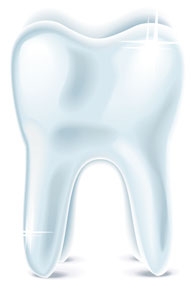By Jake Andersen, DMD
 Deep within you tooth is a layer of tissue knows as the pulp. Your pulp contains blood vessels and nerves, and is the only true “living” portion of your tooth. Sometimes bacteria find their way inside, most often due to cavities and trauma, When the bacteria penetrate, your pulp may become swollen. This swelling can cause pressure, and your body interprets that pressure as pain, or a toothache.
Deep within you tooth is a layer of tissue knows as the pulp. Your pulp contains blood vessels and nerves, and is the only true “living” portion of your tooth. Sometimes bacteria find their way inside, most often due to cavities and trauma, When the bacteria penetrate, your pulp may become swollen. This swelling can cause pressure, and your body interprets that pressure as pain, or a toothache.
The swollen tooth may require a root canal. But it still may be ok. You will need to make a trip to the dentists office, where he will do several tests to identify the source of your toothache. Knowing the problem will help your dentist to come up with the best solution.
One of many steps that will be taken to find the correct diagnosis is an x-ray. It is possible that the problem is invisible on the radiograph. This is a good thing because if the dentist can see the problem, he will probably be treating your tooth with a root canal.
Your dentist may also perform a test known as the percussion test. This test is done by tapping the handle end of the mirror on your tooth. A pained response to this signals to the dentist that your periodontal ligaments are injured. These are tiny ligaments that surround your tooth and help anchor it to the surrounding tissues. If these ligaments are damaged, there’s a pretty good chance that you have a root canal in your near future.
Another test the dentist can do is to probe your gums with his finger. Any sensitivity or raised area above a tooth would suggest whatever is causing your toothache has worked its way into your bone. Sensitivity to touch also indicates that you will most likely be needing a root canal.
An additional common test is the cold sensitivity test. A cold spray is applied to a square of cotton and placed on the tooth. If the cold temperature does not cause you any pain, it means that your pulp is dead and you need a root canal. If pain comes and goes quickly, there is damage but it is more than likely reversible damage. A pain that lingers for a decent amount of time when the cold cotton is no longer there again suggests that a root canal will be necessary.
To ensure proper treatment, the dentist needs to identify the cause of pain, which means altering the pain in his office. This could be done removing that pain, but it could also be done by briefly intensifying the pain. This alteration of your symptoms ensures that the dentist has located the right tooth along with the right source of pain, meaning he can accurately treat your tooth.
– Please visit the site of author Jake Andersen, DMD.
